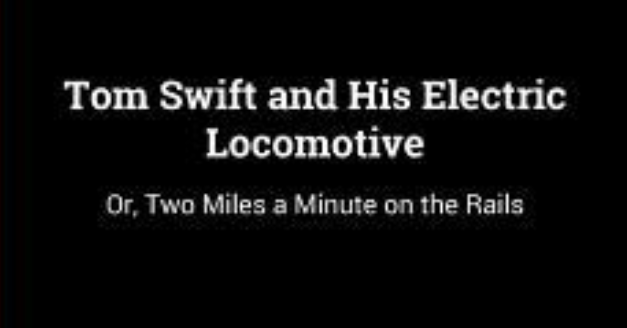CHAPTER XIV — Tom Swift and His Electric Locomotive
byCHAPTER XIV – Tom Swift and His Electric Locomotive begins four months after Tom finalized his agreement with the Hendrickton & Pas Alos Railroad to bring electric innovation to their lines. During this time, development on the Hercules 0001 has progressed steadily, although security concerns have not diminished. Andy O’Malley, a known saboteur hired by Montagne Lewis, remains missing, prompting Tom to strengthen safeguards around his facility. Fences are reinforced, guards are posted, and electric current is run through the outer perimeter during test hours. Tom knows that success breeds interference. And with the stakes so high, he can’t afford to trust luck.
As testing intensifies, Rad, Tom’s aging helper, insists on being involved in the final trip out West. His loyalty is undeniable, but his health and limitations are equally apparent. Tom appreciates Rad’s commitment but gently denies the request, entrusting Koku with the role of locomotive guardian instead. Koku’s physical strength and unshakable loyalty make him the more practical choice. Meanwhile, Mr. Damon, enthusiastic as ever, asks to join Tom during the decisive test run. He offers his presence not just as moral support, but as a testament to the belief many have in Tom’s vision. Despite his eccentric habits, Mr. Damon’s faith in the project mirrors Tom’s own drive for excellence.
Tom’s greatest challenge now lies in achieving a sustained velocity of two miles per minute—an ambitious target he believes Hercules 0001 can meet. The limitations of the Shopton track, however, mean this test must be simulated in short bursts rather than extended runs. He shares his concerns with Ned Newton, the company’s financial overseer and trusted friend. Ned, always practical, worries about the stress such experiments may place on the engine. But Tom assures him that precautions are in place. Every test is calculated. Every risk is measured. His decision to conduct a high-current test at night, under secrecy, reflects both his caution and his ambition.
Throughout the chapter, technical adjustments are described in detail. Tom recalibrates the current regulators, modifies the cooling systems, and installs additional safety cutoffs to prevent overloading. Every improvement brings him closer to the performance threshold he envisions. The locomotive hums with controlled power, its design balancing speed, torque, and resilience. Tom explains that while the theory supports a top speed of 120 miles per hour, only a real-world test can confirm whether it’s sustainable under weight and grade conditions. This isn’t just about building a faster train—it’s about reshaping how railroads operate. And Tom knows that this test could either silence the skeptics or confirm their doubts.
Meanwhile, concerns about sabotage still loom. The private detective agency Tom had previously hired has failed to track down O’Malley or uncover any new leads about his employer. Tom and Ned agree the agency’s results are disappointing. More troubling is the possibility that O’Malley remains nearby, simply waiting for the right moment to strike again. The lack of accountability fuels Tom’s mistrust, and he quietly shifts focus from external investigators to more direct security measures. Guards are briefed. Surveillance is increased. And no one, not even minor staff, is allowed near the Hercules without clearance.
As night falls, the final preparations begin. Tom stands by the locomotive, double-checking every wire, every lever, every calibration. Koku watches from the shadows, ready to respond to any suspicious activity. Mr. Damon paces nearby, muttering blessings to mechanical parts. Ned sits near the switchboard, overseeing power flow from the generator. The moment feels less like a test and more like a launch. The team knows what this night represents. It is the culmination of theory, labor, and risk.
The chapter closes as the Hercules 0001 roars to life on the testing track, its motors spinning silently, almost effortlessly. Acceleration builds in carefully measured intervals. Lights blur as speed increases. Tom holds the controls with steady hands, eyes trained on the gauges. For him, this is more than a race against numbers. It is a push against the limits of convention. And whether the test ends in triumph or a lesson in restraint, Tom is ready to face it. In this moment, the electric future of rail hangs on the silent charge surging beneath his feet.

